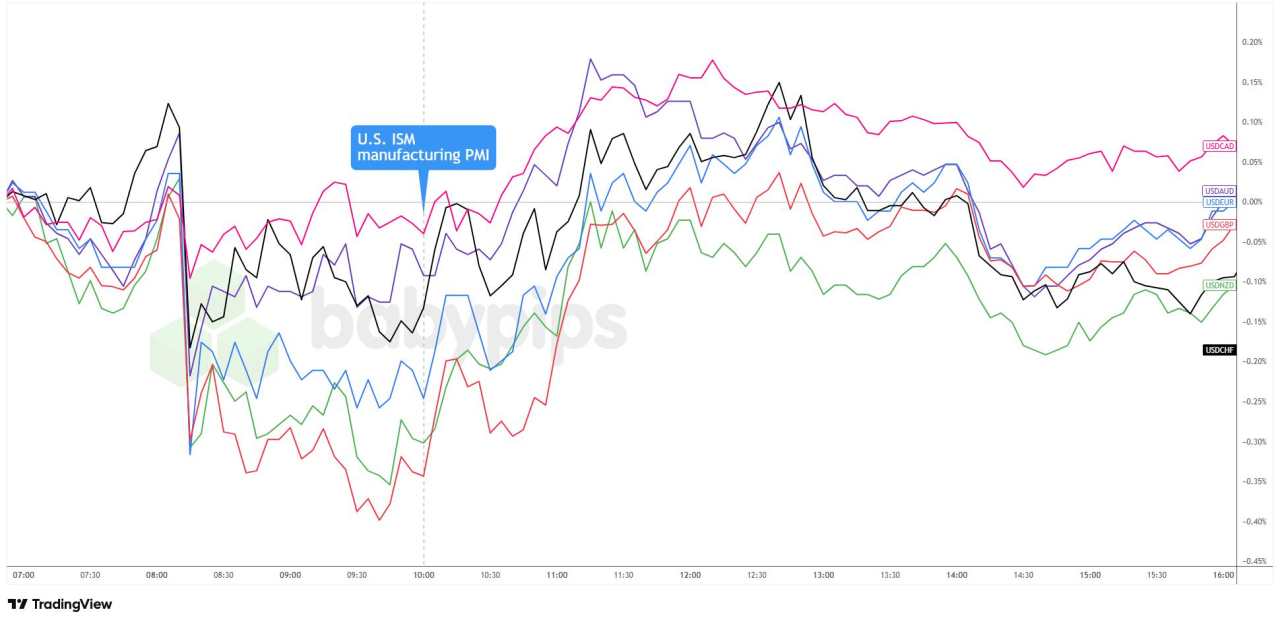The ISM manufacturing PMI for September inched up to 49.1 from 48.7 in August, slightly beating the 49.0 consensus but remaining in contraction territory for the seventh consecutive month.
While the headline showed marginal improvement, underlying components painted a concerning picture of deteriorating demand.
Key Takeaways from the September ISM Manufacturing Report
- Manufacturing contraction persists: The index rose to 49.1 from 48.7, marking the seventh straight month below 50
- Demand conditions worsened: New orders fell back into contraction at 48.9 (from 51.4), reversing August’s brief expansion
- Employment remained weak: The employment index improved slightly to 45.3 from 43.8, but stayed deeply in contraction
- Tariff impact intensifies: Prices remained elevated at 61.9, with companies reporting tariffs are “killing” their businesses
Link to official ISM Manufacturing PMI (September 2025)
The report revealed widespread manufacturing distress. Only five of 18 industries reported growth in September, down from seven in August.Despite the modest headline improvement, the details revealed significant weakness. New orders contracted after one month of growth, falling 2.5 points to 48.9. Export orders plunged to 43.0 from 47.6, reflecting continued trade tensions.
Survey respondents described conditions as “severely depressed,” with one transportation equipment executive stating they believe the sector is in a “stagflation period where prices are up but orders are down due to tariff policy.”
Particularly concerning was the revelation that tariffs are causing operational disruptions beyond just cost increases – materials are being held up at borders due to documentation issues, and customers are refusing to pay higher prices, leading to collapsed order books.
Market Reactions
U.S. Dollar vs. Major Currencies: 5-min

Overlay of USD vs. Major Currencies Chart by TradingView
The dollar, which had already been pressured by the soft ADP payrolls report, bounced from its intraday lows after the ISM headline PMI came in stronger than expected.
It went on to erase the rest of its U.S. session losses, likely helped by some position squaring as traders braced for volatility from the uncertain shutdown timeline.
The dollar eased back around the London close, but still finished the day higher against most majors, except for the British pound and the New Zealand dollar.


Tải thất bại ()